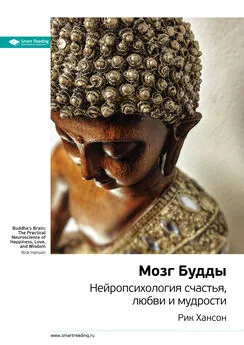Рик Хансон - Жизнь в стиле Fun. Что делает нас довольными, спокойными и уверенными
- Название:Жизнь в стиле Fun. Что делает нас довольными, спокойными и уверенными
- Автор:
- Жанр:
- Издательство:Питер
- Год:2019
- Город:Санкт-Петербург
- ISBN:978-5-4461-0840-4
- Рейтинг:
- Избранное:Добавить в избранное
-
Отзывы:
-
Ваша оценка:
Рик Хансон - Жизнь в стиле Fun. Что делает нас довольными, спокойными и уверенными краткое содержание
«Книга посвящена одному простому явлению: скрытой силе повседневных позитивных ощущений. Силе, способной перевоспитать мозг и таким образом изменить жизнь к лучшему. Я покажу вам, как превратить активное переживание приятных мгновений в вашу сильную сторону, достичь уверенности, свободы, комфорта, самоуважения и начать заботиться о себе. Речь не о тех моментах, когда вы чувствуете себя на миллион долларов. Я говорю о простых радостях жизни: ощущении уюта от любимого свитера, удовольствии от чашки кофе, теплоте общения с другом, удовлетворении от выполненного задания или любви вашего спутника.
Вы научитесь практике принятия хорошего. Если посвящать ей по десять секунд несколько раз в день, это укрепит состояние радости, спокойствия и внутренней силы. Наука, лежащая в основе этой практики, не относится к позитивному мышлению. И это не очередная программа по созданию позитивных чувств. То и другое не приносит пользы вашему мозгу. В нашей книге речь пойдет о трансформации мимолетного опыта в устойчивые положительные изменения вашей нейронной сети». — Рик Хансон.
«Жизнь в стиле Fun» учит нас избавляться от привычки видеть в первую очередь негатив, которая появилась в ходе эволюции. Она помогает наслаждаться позитивными вещами. Сделайте себе и своим близким лучший подарок: подарите эффективную стратегию по усилению радости с помощью практик, связанных с мозгом, одновременно простых и приятных.
Жизнь в стиле Fun. Что делает нас довольными, спокойными и уверенными - читать онлайн бесплатно ознакомительный отрывок
Интервал:
Закладка:
36
Eileen Luders et al. The Underlying Anatomical Correlates of Long-Term Meditation: Larger Hippocampal and Frontal Volumes of Gray Matter // NeuroImage. 2009. 45. P. 672–678; Sara Lazar et al. Meditation Experience Is Associated with Increased Cortical Thickness // Neuroreport. 2005. 16. P. 1893–1897.
37
Britta Holzel et al. Investigation of Mindfulness Meditation Practitioners with Voxel-Based Morphometry // Social Cognitive and Affective Neuroscience. 2008. 3. P. 55–61; Lazar et al. Meditation Experience.
38
Luders et al. Anatomical Correlates of Long-Term Meditation; Holzel et al. Investigation of Mindfulness Meditation.
39
Jeffery Dusek et al. Genomic Counter-Stress Changes Induced by the Relaxation Response // PLoS One. 2008. 3. e2576.
40
Southwick, Charney. The Science of Resilience.
41
Даты в этом разделе являются приблизительными.
42
Scott W. Emmons. The Mood of a Worm // Science. 2012. 338. P. 475–476.
43
Elizabeth Pennisi. Nervous System May Have Evolved Twice // Science. 2013. 339. P. 391.
44
Ученые называют разные даты в зависимости от метода распределения млекопитающих и приматов по категориям.
45
Shannon McPherron et al. Evidence for Stone-Tool Assisted Consumption of Animal Tissues before 3.39 Million Years Ago at Dikika, Ethiopia // Nature. 2010. 446. P. 857–860; Semaw et al. 2.5-Million-Year-Old Stone Tools from Gona, Ethiopia // Nature. 1997. 385. P. 333–336.
46
Michael Balter. New Light on Revolutions That Weren't // Science. 2012. 336. P. 530–561.
47
Это открытый вопрос. Исследования в поддержку этого утверждения см. здесь: Pierre-Yves Placais, Thomas Preat. To Favor Survival Under Food Shortage, the Brain Disables Costly Memory // Science. 2013. 339. P. 440–442; Linda Palmer, Gary Lynch. A Kantian View of Space // Science. 2010. 328. P. 1487–1488; Tobias Esch, George B. Stefano. The Neurobiology of Stress Management // Neuroendocrinology Letters. 2010. 31 (1). P. 19–39.
48
Pontus Skoglund et al. Origins and Genetic Legacy of Neolithic Farmers and Hunter-Gatherers in Europe // Science. 2012. 336. P. 466–469.
49
Jung-Kyoo Choi, Samuel Bowles. The Coevolution of Parochial Altruism and War // Science. 2007. 318. P. 636–640.
50
Название этого раздела взято из статьи: Roy Baumeister. Bad Is Stronger Than Good // Review of General Psychology. 2001. 5. P. 323–370.
51
Eldad Yechiam, Guy Hochman. Losses as Modulators of Attention: Review and Analysis of the Unique Effects of Losses Over Gains // Psychological Bulletin. 2013. 139 (2). P. 497–518.
52
Baumeister et al. Bad Is Stronger Than Good; Paul Rozin, Edward Royzman. Negativity Bias, Negativity Dominance, and Contagion // Personality & Social Psychology Review. 2001. 5. P. 296–320.
53
Baumeister et al. Bad Is Stronger Than Good; Rozin, Royzman. Negativity Bias.
54
J. S. Morris et al. A Differential Neural Response in the Human Amygdala to Fearful and Happy Facial Expressions // Nature. 1996. 383. P. 812–815.
55
J. S. Morris et al. Conscious and Unconscious Emotional Learning in the Human Amygdala // Nature. 1998. 393. P. 467–470.
56
Daniel Kahneman, Amos Tversky. Prospect Theory: An Analysis of Decision Under Risk // Econometrica. 1979. 47 (2). P. 163–292; Yechiam, Hochman. Losses as Modulators of Attention.
57
John Gottman. Why Marriages Succeed or Fail: And How You Can Make Yours Last. New York: Simon & Schuster, 1995.
58
Fredrickson. Positivity.
59
Rozin, Royzman. Negativity Bias.
60
Rozin, Royzman. Negativity Bias.
61
Baumeister et al. Bad Is Stronger Than Good.
62
Cunningham, Brosch. Motivational Salience; Israel Liberzon et al. Extended Amygdala and Emotional Salience: A PET Activation Study of Positive and Negative Affect // Neuropsychopharmacology. 2003. 28 (4). P. 726–733; Stephan B. Hamann et al. Ecstasy and Agony: Activation of the Human Amygdala in Positive and Negative Emotion // Psychological Science. 2002. 13 (2). P. 135–141; Hugh Garavan et al. Amygdala Response to Both Positively and Negatively Valenced Stimuli // Neuroreport. 2001. 12 (12). P. 2779–2783.
63
Cunningham et al. Neural Correlates of Evaluation Associated with Promotion and Prevention Regulatory Focus // Cognitive, Affective, and Behavioral Neuroscience. 2005. 5 (2). P. 202–211; Andrew J. Calder et al. Neuropsychology of Fear and Loathing // Nature. 2001. 2. P. 353–363.
64
Hugo D. Critchley. Neural Mechanisms of Autonomic, Affective, and Cognitive Integration // Journal of Comparative Neurology. 2005. 493. P. 154–166.
65
Guestavo Morrone Parfitt et al. Moderate Stress Enhances Memory Persistence: Are Adrenergic Mechanisms Involved? // Behavioral Neuroscience. 2012. 126 (5). P. 729–730.
66
E. D. Kirby et al. Basolateral Amygdala Regulation of Adult Hippocampal Neurogenesis and Fear-Related Activation of Newborn Neurons // Molecular Psychiatry. 2012. 17. P. 527–536.
67
Bruce McEwen, Peter Gianaros. Stress- and Allostasis-Induced Brain Plasticity // Annual Review of Medicine. 2011. 62. P. 431–435.
68
McEwen, Gianaros. Stress- and Allostasis-Induced Brain Plasticity; Poul Videbech, Barbaba Ravnkilde. Hippocampal Volume and Depression: A Meta-Analysis of MRI Studies // American Journal of Psychiatry. 2004. 161 (11). P. 1957–1966; Stephanie Campbell et al. Lower Hippocampal Volume in Patients Suffering from Depression: A Meta-Analysis // American Journal of Psychiatry. 2001. 161 (4). P. 598–607.
69
McEwen, Gianaros. Stress- and Allostasis-Induced Brain Plasticity.
70
Tali Sharot. The Optimism Bias: A Tour of the Irrationally Positive Brain. New York: Vintage, 2011.
71
Deborah Kermer et al. Loss Aversion Is an Affective Forecasting Error // Psychological Science. 2006. 17 (8). P. 649–653; Baumeister et al. Bad Is Stronger Than Good; Rozin, Royzman. Negativity Bias.
72
Nadine Gogolla et al. Perineuronal Nets Protect Fear Memories from Erasure // Science. 2009. 325. P. 1258–1261.
73
Daniel L. Schachter. The Seven Sins of Memory: How the Mind Forgets and Remembers. New York: Houghton Mifflin Harcourt Books, 2002.
74
Внутренние силы, а также разные чувства, например несовершенства, в основе которых не лежит обучение и запоминание (другими словами, они не приобретаются), основаны на внутренних, генетически обусловленных характеристиках и тенденциях.
75
Ссылки на утверждения в этом абзаце см. здесь: Baumeister et al. Bad Is Stronger Than Good; Rozin, Royzman. Negativity Bias.
76
Селигман М. Как научиться оптимизму.
77
Селигман М. Как научиться оптимизму.
78
Некоторые виды психотерапии являются исключениями, заслуживающими внимания. К ним относятся фокусирование ( Юджин Джендлин. Фокусирование. М.: Корвет, 2016); десенсибилизация и переработка движением глаз, или EMDR ( Deborah L. Korn, Andrew M. Leeds. Preliminary Evidence of Efficacy for EMDR Resource Development and Installation in the Stabilization Phase of Treatment of Complex Posttraumatic Stress Disorder // Journal of Clinical Psychology. 2002. 58 (12). P. 1465–1487); когерентная терапия ( Toomey, Ecker. Competing Visions; Ecker and Toomey. Depotentiation of SymptomProducing Implicit Memory in Coherence Therapy); широкая аффективная борьба со стрессом ( Nicholas Terrier. Broad Minded Affective Coping [BMAC]: A ‘Positive' CBT Approach to Facilitating Positive Emotions // International Journal of Cognitive Therapy. 2010. 31 (1). P. 65–78).
79
Paul D. MacLean. The Triune Brain in Evolution: Role in Paleocerebral Functions. New York: Springer, 1990.
80
Jaak Panksepp. Affective Neuroscience: The Foundations of Human and Animal Emotions. New York: Oxford University Press, 1998; Panksepp. Affective Consciousness: Core Emotional Feelings in Animals and Humans // Consciousness & Cognition. 2005. 14 (1). P. 3080; Jeffrey Burgdorf, Panksepp. The Neurobiology of Positive Emotions // Neuroscience and Biobehavioral Reviews. 2006. 30. P. 173–187.
81
Stephen W. Porges. The Polyvagal Theory: Neurophysiological Foundations of Emotions, Attachment, Communication, and SelfRegulation. New York: W. W. Norton & Company, 2011.
82
Paul Gilbert. Introducing Compassion-Focused Therapy // Advances in Psychiatric Treatment. 2009. 14. P. 199–208.
83
E. Tory Higgins. Beyond Pleasure and Pain // American Psychologist. 1997. 52 (12). P. 1280–1300.
84
Porges. The Polyvagal Theory.
85
Waguih William IsHak et al. Oxytocin's Role in Enhancing Well-Being: A Literature Review // Journal of Affective Disorders. 2011. 130 (1). P. 1–9; Inga D. Neumann. Brain Oxytocin: A Key Regulator of Emotional and Social Behaviours in Both Females and Males // Journal of Neuroendocrinology. 2008. 20. P. 858–865.
86
Pawel K. Olszewski et al. Oxytocin as Feeding Inhibitor: Maintaining Homestasis in Consummatory Behavior // Pharmacology Biochemistry and Behavior. 2010. 97. P. 47–54; Esch, Stefano. The Neurobiology of Stress Management.
Читать дальшеИнтервал:
Закладка:



![Джейн Мэтьюз - Жизнь в стиле соло: как жить одному и наслаждаться этим [litres]](/books/1073568/dzhejn-metyuz-zhizn-v-stile-solo-kak-zhit-odnomu-i.webp)






